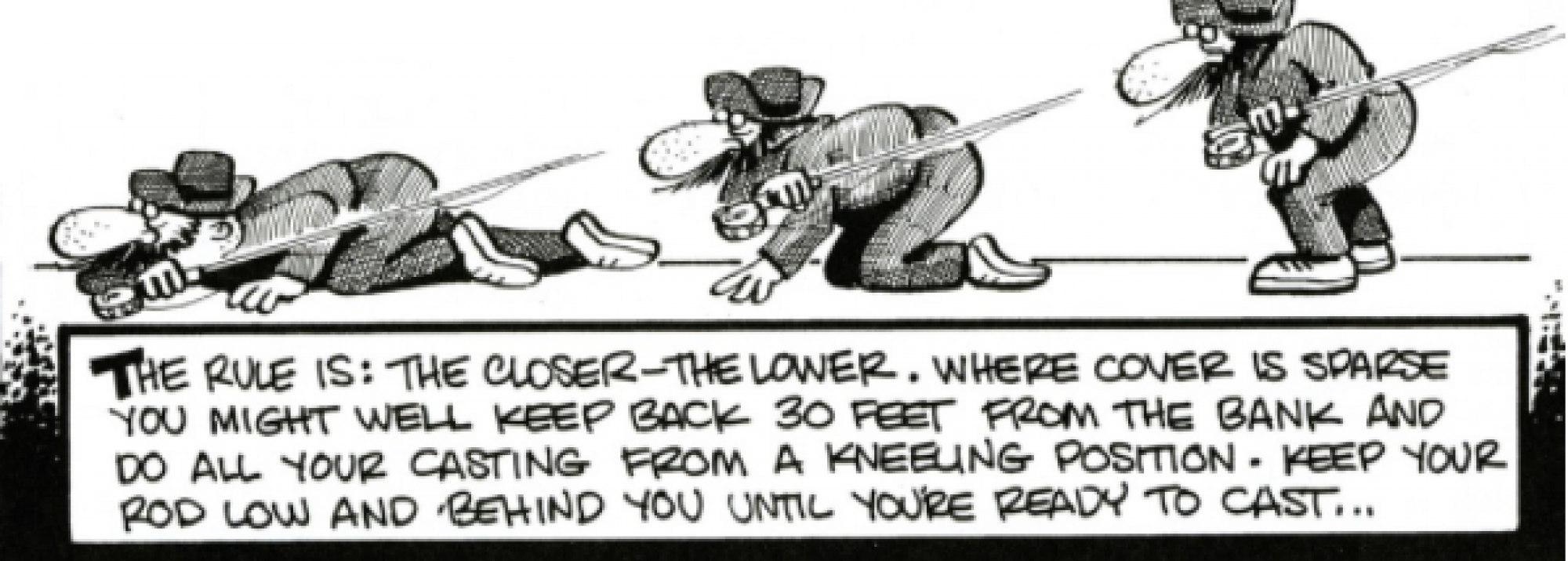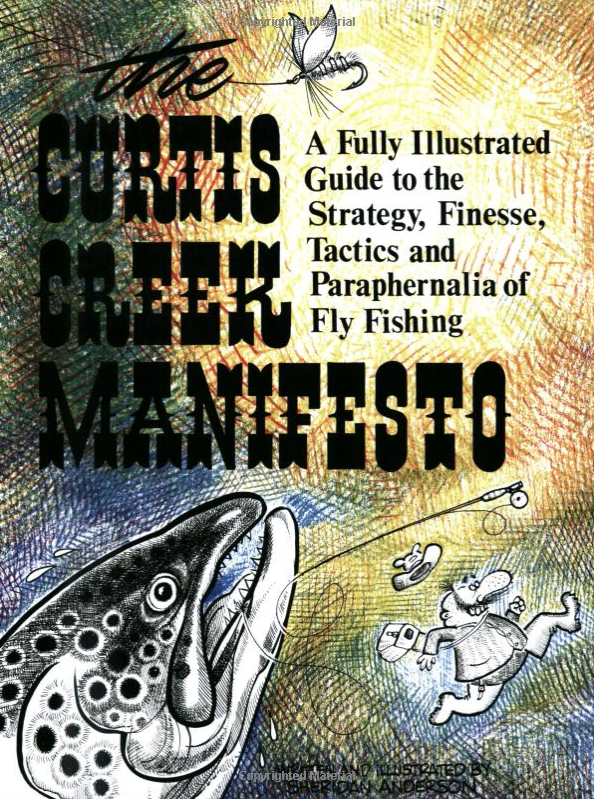By Eric Booton
Learning to fly fish is always a mild struggle-fest. I personally endured the process with choice words, and
extended periods of time with my rod catching more dust than fish. In the past few years I’ve watched friends and family go through a similar love and hate relationship with their fly rod, missing hits, navigating bird nests and adopting an all-to frequent, bewildered face that expresses, “What in the….?” I know this look, because I mastered it years ago.
I am confident I am not the only angler who has simply nodded along when learning a new technique or digesting well-intended tips on the water when it is simply not computing. And I have probably had at least 10 people nod along with me, grasping at straws to decipher my poor explanation of loading the rod, reading the water or catching an appropriate drift. I do not blame you. I have been there, and there is nothing wrong with it.
I can only imagine that sales of “The Curtis Creek Manifesto” written and illustrated in 1978 by Sheridan Anderson skyrocketed after The Flyfish Journal released their article, “Searching for Sheridan,” which highlighted Anderson’s timeless guide to fly fishing. In fact, I had a copy of the book ordered before even finishing the article.
Having had time to sit down and read “The Curtis Creek Manifesto,” I truly wish a copy of it would have accompanied my first Cabela’s Wind River fly rod combo. Sheridan does an outstanding job boiling down the basic principles and techniques of fly fishing by distilling them into the simplest of illustration and instruction that are quickly lost on the river when the trout are calling. My fishing repertoire and instruction technique for future use grew within the first dozen pages of the manifesto. Concepts that had only quickly been taught to me on the river were becoming more clear and numerous gaps were being filled.
As I read, personal missteps and well-intentioned, but clouded, instruction that I have offered to others circled in my head. The lessons were so straightforward—why have I been so awful at addressing the problem or putting things in simpler terms for friends? Like last spring chasing carp on the Los Angeles River, I was baffled at how good the invasive fish were at spotting me before I got a good cast off. All I had to do was hone in on my covert moves and cast from behind a tree or account for the fish’s range of vision and cast further from the river’s edge or try kneeling. The solutions were simple, and even sounded fun, but honestly weren’t even in my tool box until now.

I have found Anderson’s Manifesto to be a refreshing winter read. I’m now eager to refine my fish stalking skills this spring and am prepared to miss fewer strikes and dive beyond the surface of entomology. It’s like The Far Side comic of fly fishing, with entertaining cartoons but also legitimate fly fishing instruction. Having been written and illustrated 40 years ago, the Manifesto also offers up a window into the sport’s past for those of us who weren’t able to witness it first-hand. I was previously unfamiliar with an “auto reel” and am fairly positive I prefer my Patagonia Storm Front bag to a wicker creel.
“It’s losing the big ones that will hasten you to the madhouse — a cool head will keep the straight-jacket at bay,” said Sheridan Anderson.
I have been driven a bit nutty by the steelhead and bonefish that got away, and I am thinking a cool head and more emphasis on technique will have me set for success this fishing season.
Eric Booton is the sportsmen’s outreach coordinator for TU’s Alaska Program.



